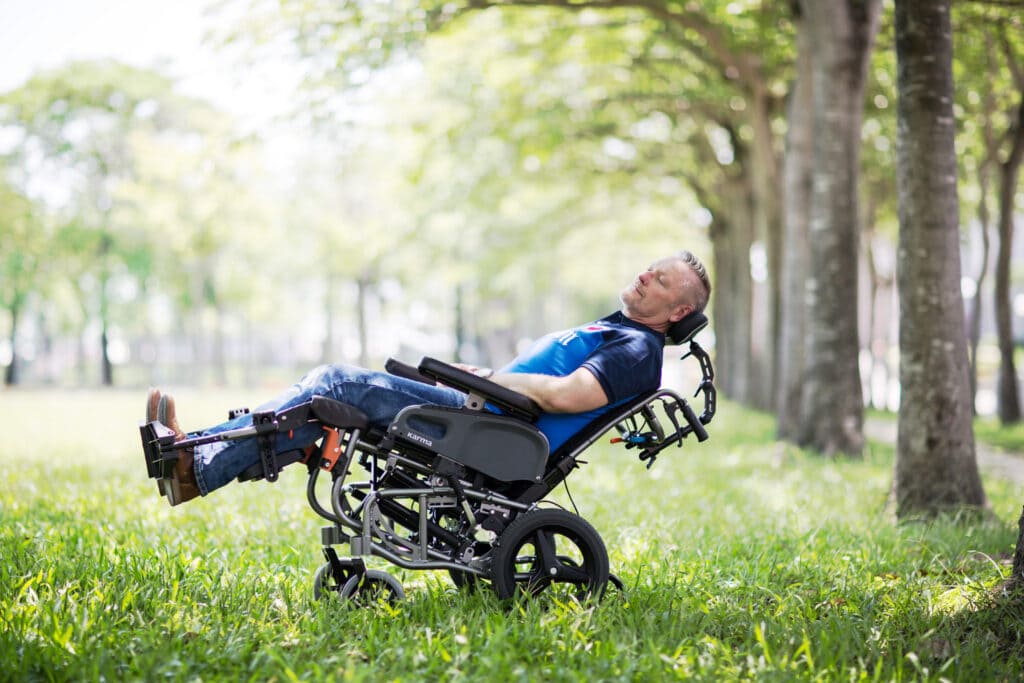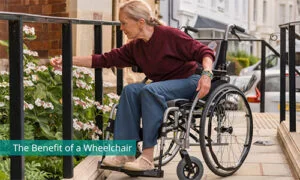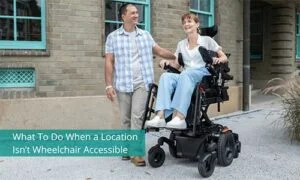It was actually found that 80% of wheelchair users identified at least one wheelchair fit issue, like comfort, hindered mobility, or poor posture. When elderly people start to feel uncomfortable in the seated position they are left in, they will try to reposition themselves to be more comfortable. For example, they will try to slide down the chair to reduce the strain on their back, unknowingly causing more damage to their bodies in the long run.
To prevent poor posture in the wheelchair, follow these 4 steps to help elderlly wheelchair users to sit more comfortably.
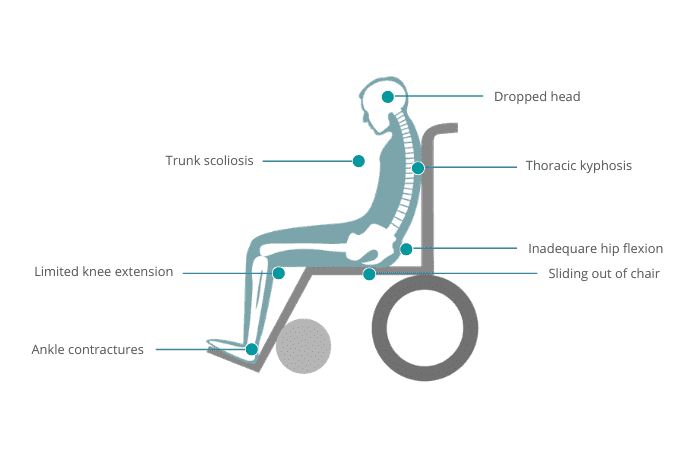
Typical seating problems of the elderly when they start to slide down the wheelchair. Source: Karma Medical
1. Use a Wheelchair Pelvic Belt
What is a pelvic belt? A pelvic belt is an important tool that prevents elderly users from sliding down the wheelchair. Once it is in the correct position, the user will not be able to move their pelvis, which will stabilize their posture.
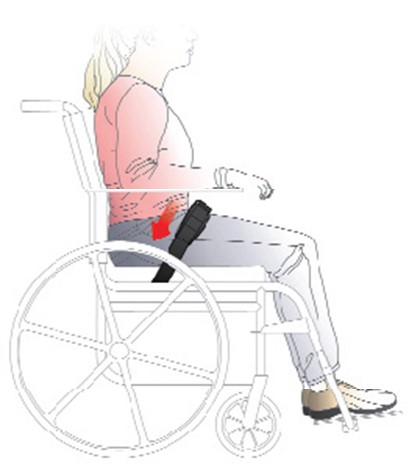
The position of the pelvic belt to hold the pelvis in place. Image Source: Seating Dynamics
How to use a pelvic belt to prevent the user from sliding?
Most wheelchairs come with a pelvic belt already attached, if not you can customise your wheelchair to include one. When you put on the belt, ensure that it goes across your pelvis and meets at either side of your hip bones. If the belt is too high, you risk injuring the user and allowing them to continue sliding down the chair.

The left image is the correct position of the pelvic belt and on the right is the incorrect position.
When you put on the belt, ensure that the user is sitting as far back on the wheelchair as possible with their back against the backrest. Make sure there is room between the belt and the user of about 1 fingers width only. If you leave too much space in between, the user will have room to slide down and create improper posture.
2. Set Up the Correct Position for the Footplates
How does the position of the footplates impact the user’s sitting position?
- If the footplates are set too high, the thigh will be tilting up, and all of the pressure will be on the hip bones.
- If they are set too low, the thigh will be tilting down, and all of the pressure will be on the front of the thighs.
The correct position for footplates should be when the user’s thighs are parallel to the seat surface. This way, the sitting pressure is distributed evenly across each thigh.
If you have an elevating leg rest on your wheelchair, you can find how to set up your leg rest here.
3. Prevent the User From Sliding With a Reclining and Tilt-in-Space Wheelchair
If the elderly user has to sit in the wheelchair for long periods of time, another way to solve the problem of sliding is to use a tilting and reclining wheelchair. Using the Tilt-in-Space function will
4. What Other Adjustments Can Prevent the User From Sliding?
- Correct Seat Depth – If the depth of the wheelchair is too deep, the user will slide down the wheelchair to find support for their back. Additionally, if the seat depth is too short then you risk the user leaning forward and using their feet to find support.
- Correct Seat Width – If the width of the wheelchair is too wide, the user will lean to one side to find a more comfortable position to support themselves. The negative impact of this is that the user could develop scoliosis. The solution for this is to have lateral trunk supports on the wheelchair or use small wedges between the side of the wheelchair and the user’s outer thigh.
- Height Adjustable Armrests – If fixed armrests are too high or too low, the user risks leaning to one side and putting unnecessary strain on their neck and shoulders.
You can read more about how to prevent elderly users from sliding and leaning forward on the wheelchair in our other blogs!
Keep Reading

 Global
Global